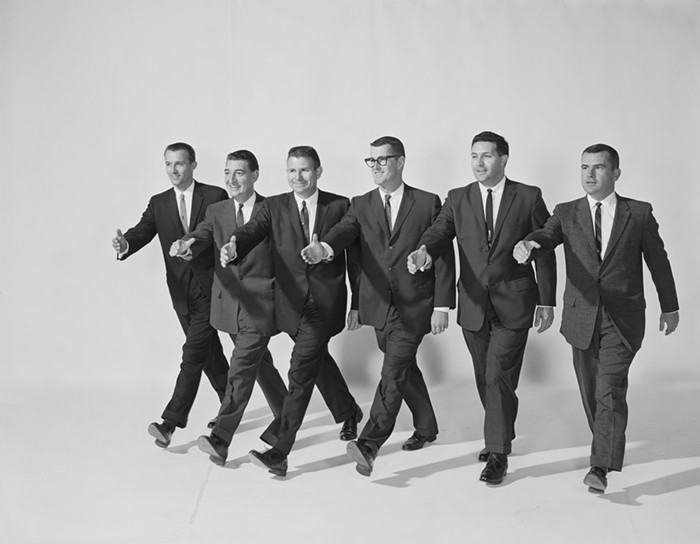dirs. Miller, Rodriguez
Opens Fri April 1
Various Theaters
There are comic books, and then there's Sin City. Frank Miller's dark, pulpy graphic novels have always been the defining works of one of comics' most talented creators, crammed to the margins with tales of lust, vengeance, and… well, that's pretty much it.
And there are filmmakers, and then there's Robert Rodriguez. Rodriguez isn't the best filmmaker around, but in every frame of his work (El Mariachi, From Dusk Till Dawn, Once Upon a Time in Mexico) there's a passion--a contagious adrenalin missing from other directors' films.
The film version of Sin City--directed by Miller and Rodriguez, and starring a near-complete roster of Hollywood's A-list--could've been a tremendous clusterfuck. Not only did Rodriguez enlist Miller to co-direct, he also decided to literally translate the comics--almost every shot corresponds to a panel, the dialogue is nearly identical, and it's even filmed in black and white to emulate Miller's art. In short, Sin City revels in the things that most comic book movies avoid.
But Sin City is far from a clusterfuck. It's not flawless, but what Sin City gets right, it gets really fucking right.
At first blush, Sin City's style overwhelms its substance: Shot digitally against greenscreen, then fleshed out with CG backgrounds and bold splashes of color, the film looks absolutely amazing.
But eye candy has limited appeal, and Sin City's focus is on the characters and their tales--of revenge, fucking, blood and gore, and, occasionally, redemption. Like Pulp Fiction--whose director, Quentin Tarantino, is spotlighted during Sin City as a "guest director"--the vignettes of Sin City defy mainstream film's reliance upon the three-act structure. There's Dwight (Clive Owen), a badass who, along with Sin City's ruthless prostitutes, gets stuck in an impossible, lethal situation. There's Hartigan (Bruce Willis), an aging cop futilely trying to protect an innocent young girl. And there's Marv (Mickey Rourke), an ass-ugly thug whose only mission is to track down those who killed the woman he loved.
Rourke is the strongest, giving Marv a confused, yet devoted soul, while Owen and Willis relish the opportunity to spew out Miller's noir-inspired dialogue. And the women of Sin City surpass those of the comics (namely, there's the unbelievably sexy Jessica Alba, as cowgirl-themed stripper Nancy). In Miller's books, women are largely unattainable sex objects; here the women are characters instead of hyper-sexualized cartoons.
But Rodriguez is better with kinetic action than the simmering emotions Miller's characters feed upon. When the gleefully violent action comes in Sin City, its bloody spurts are welcome punctuation for the film's slow tumults of emotion. By being unerringly faithful to the comic, Rodriguez and Miller unintentionally show that what sometimes works in literature is a lot harder to pull off in film.
But still: Sin City remains a brilliantly creative, enormously cool piece of pop art, a film that has bigger balls and more fun than a year's worth of standard blockbusters. Even if you wouldn't want to live in Sin City, it's definitely worth visiting.



















